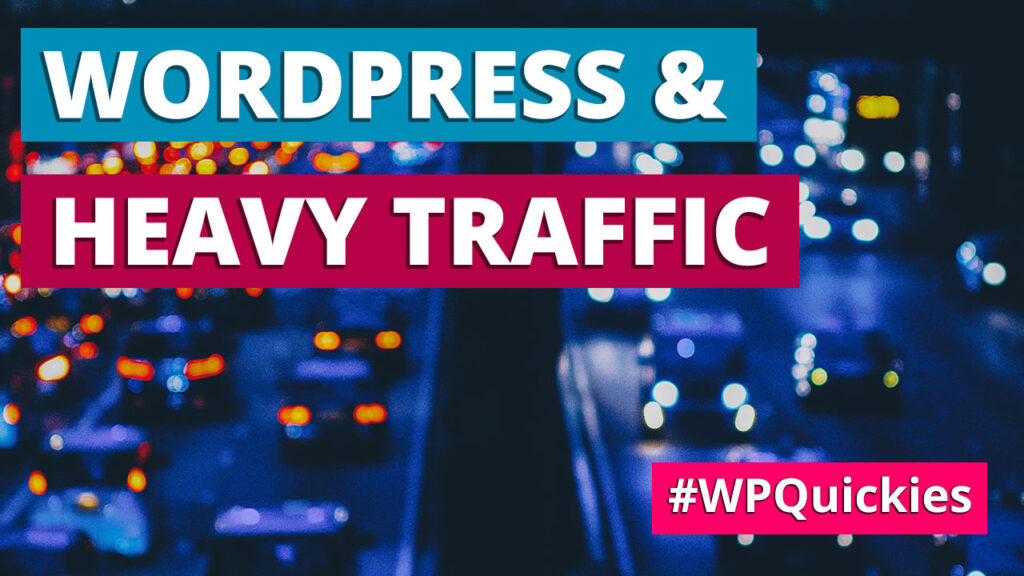Can WordPress handle enterprise-level, heavy traffic with millions of visitors per day? Let’s find out.
WordPress At Scale
A common question I get asked is “Can WordPress handle heavy traffic” or put another way, “Can WordPress scale for high-volume traffic?”
The quick answer is “Yes”.
Examples Of WordPress In the Enterprise
Let’s start with some examples of enterprise organisations that use WordPress.
- The White House
- News Corp Australia
- USA TODAY Sports Media
- New York Post
- Capgemini (IT/Consulting)
- PMC: Penske Media Corporation (Digital Marketing/Print Brands like Variety & Rolling Stone)
- Kaiser Family Foundation (NFP/Charity in the Healthcare space)
- NGINX
- WordPress.com
These organisations operate on the enterprise level with traffic in the of millions every hour or tens of millions every day and WordPress powers them all.
So if a client of yours asks if WordPress can handle large volumes of traffic – you can say “Yes” and point to one of these examples.
Typical Small Biz WP Website Setup
Let’s have a look at a typical small business WordPress website setup.
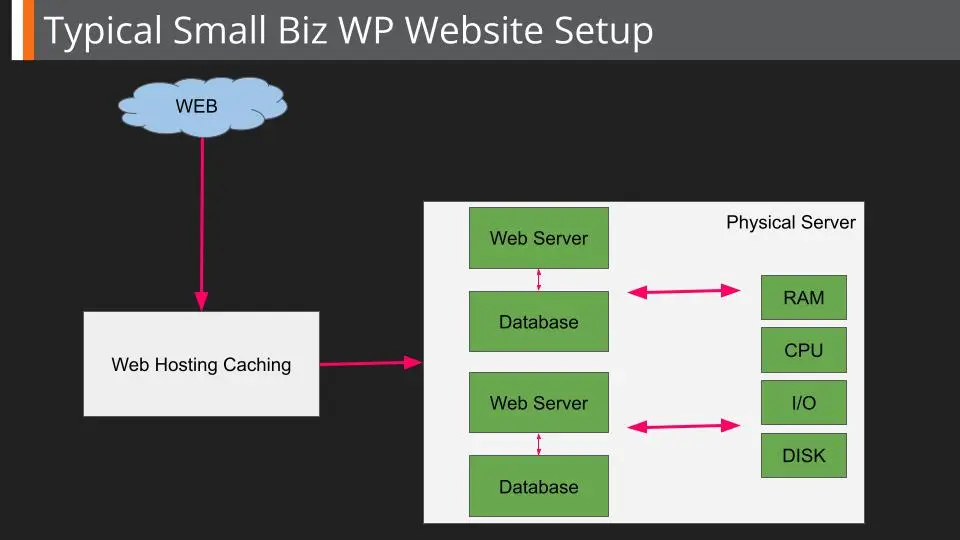
Web traffic passes through your web host’s physical caching systems.
Then it hits a physical server that has limited shared RAM, CPU, I/O and Disks running multiple web servers. Each web server is attached to a single database.
This is a fine setup for consistent moderate website traffic and you can fine-tune RAM, CPU, I/O and Disk to accommodate small traffic fluctuations.
This is called scaling up and down, adding and removing CPU and RAM etc to make the single physical server more or less powerful to meet demand.
So what’s the problem with high traffic to your website?
When you get a spike of high traffic to your website, suddenly all the server resources such as RAM, CPU and bandwidth are all pushed to their maximum limits where you can no longer allocate more to the physical server.
When incoming requests are outstripping the capacity of your website setup to process them, this is called bottlenecking.
Your traffic is trying to squeeze through a space that is unable to scale to demand. The system has reached it maximum capacity and things start to become unresponsive or worse, crash.
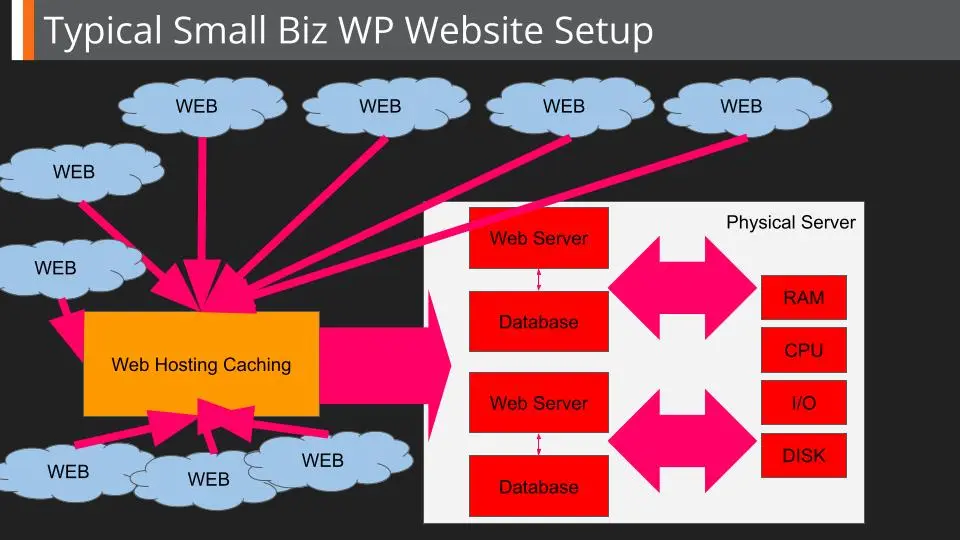
If your site is handling consistent enterprise-level high traffic, or you know that your traffic will spike during seasonal changes or marketing campaigns, you need a scalable solution.
Elastic Scalable WordPress Architecture
Here is an example of a scalable WordPress architecture that can handle high traffic and traffic spikes, based on Amazon AWS but it could be any cloud solution like Google Cloud, Microsoft Azure or a branded managed WordPress host like Conetix, WP Engine, Kinsta, Wordify etc.
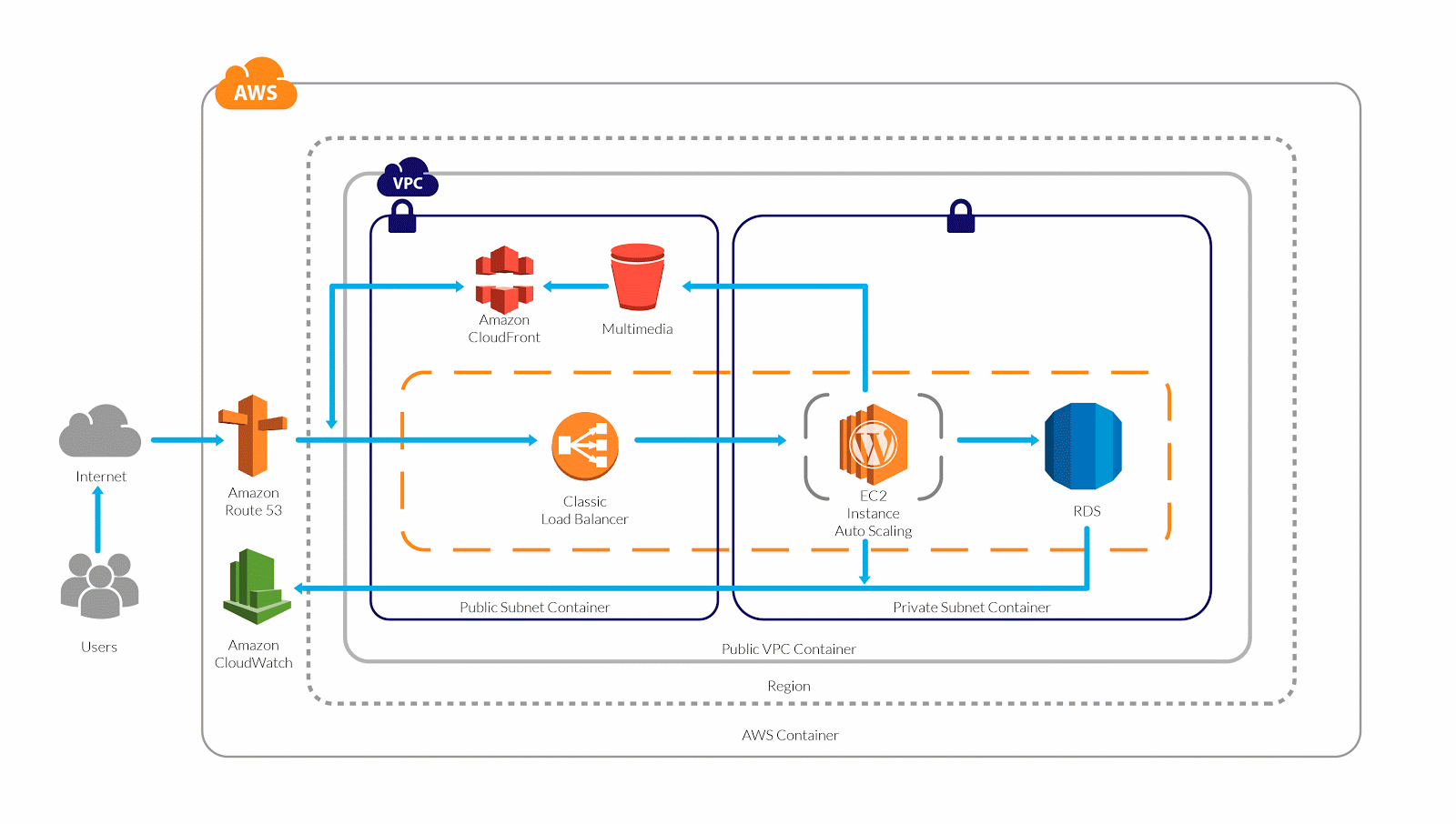
Let me explain a little about how this architecture works and scales.
At the front is Amazon Route 53 which handles routing traffic through to one or more load balancers.
The job of a load balancer is to distribute traffic evenly to two or more web servers.
In this case, we have an EC2 auto-scaling web instance that will automatically add additional RAM, CPU, I/O and disk according to demand. If demand reaches the max resources of the EC2 web server instance it will spin up another EC2 web server instance and the load balancer will start to send traffic to that resource to balance the load.
WordPress needs a database and in this case, we have an Amazon RDS database which can also autoscale.
Typically you will have a master database with multiple slave instances and a database load balancer to send traffic evenly across the resources.
In this case, the media assets for the website are handled separately, served from Amazon S3 using Cloudfront so which is a separate scalable system from the web servers.
Each part of this solution can be scaled on demand: IP routing, load balancers, web servers, databases and file system.
This is called elastic scaling as your resources are being stretched out to increase the width of the bottleneck, letting more traffic into your system.
All you need is the money to pay for it.
This is just one example of a scalable WordPress solution and managed WordPress hosting companies will employ a similar architecture in their backend systems that you will be unaware of because they package it up as a bundled priced monthly or yearly solution.
Summary
Scaling WordPress for heavy traffic is a reality that enterprise organisations are already using.
But there are also software coding, caching and design considerations that you can employ to decrease the size of your pages and limit database and external API requests, increasing the speed and responsiveness of your website which will help serve it to more traffic quicker.
You’ll also likely see an increase in your search engine results as you increase the speed and usability of your site.
#WPQuickies
Join me every Thursday at 1 pm Sydney time for some more WPQuickies – WordPress tips and tricks in thirty minutes or less.
Broadcasting live on YouTube and Facebook.
Suggest a #WPQuickies Topic
If you have a WordPress topic you want to see explained in 30 mins or under, fill out the form below.
https://forms.gle/mMWCNd3L2cyDFBA57
Watch Previous WPQuickies
-

How To Reduce TTFB and Improve Page Load Speed
-
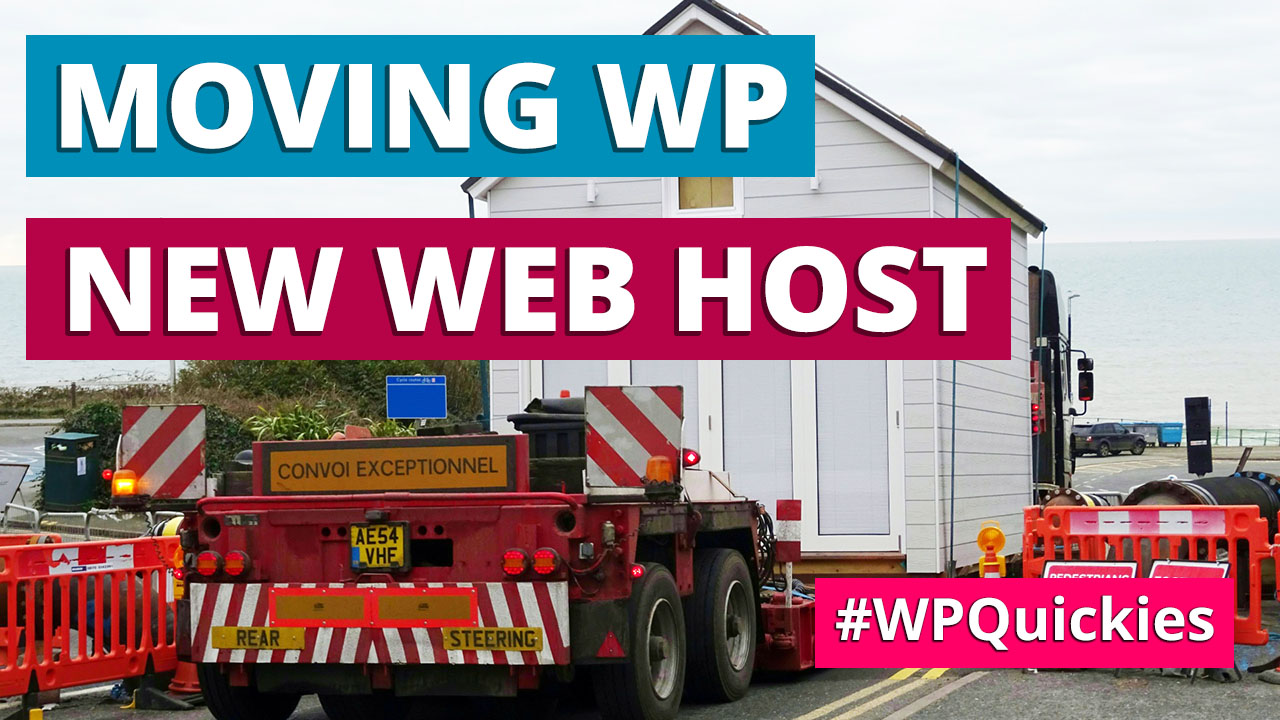
How To Move WordPress To Another Web Host – WPQuickies
-

Who Owns WordPress? – WPQuickies
-
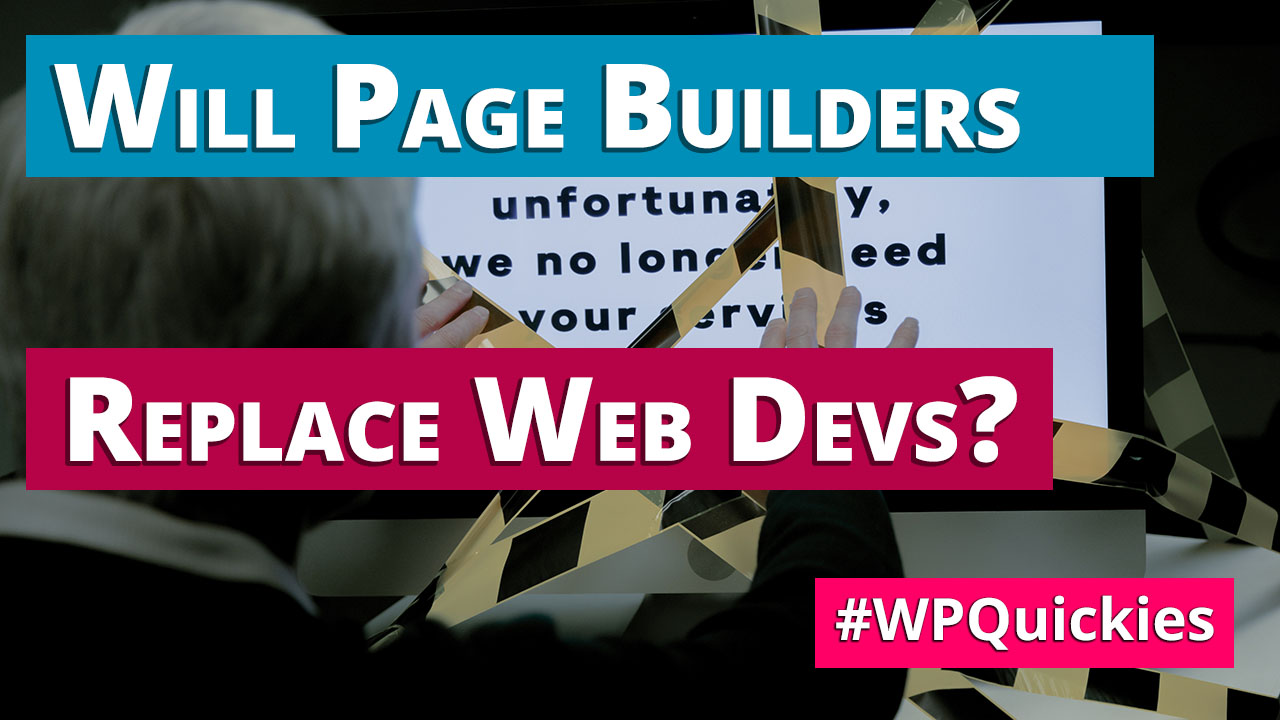
Will Page Builders Replace Web Designers & Developers? – WPQuickies
-

WordPress Updates: How Do They Work? – WPQuickies
-
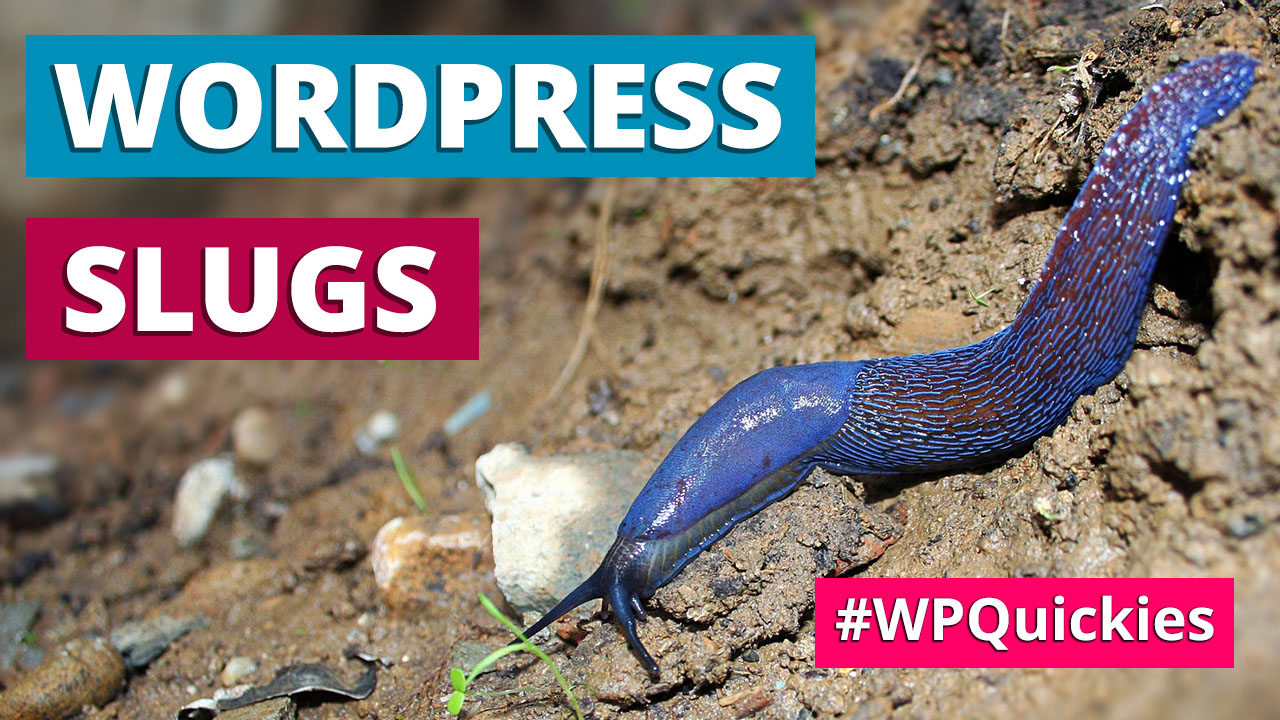
WordPress Slugs What Are They & How To Change Them – WPQuickies
